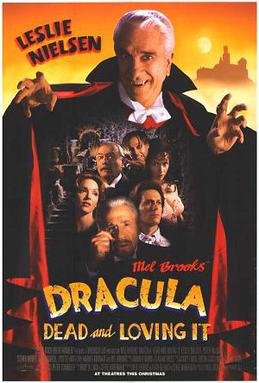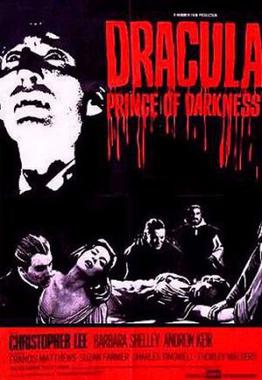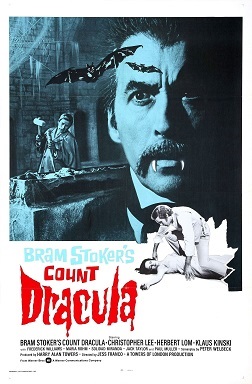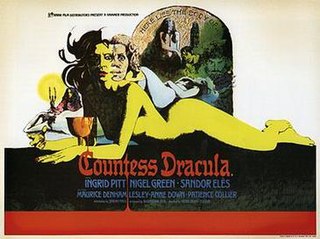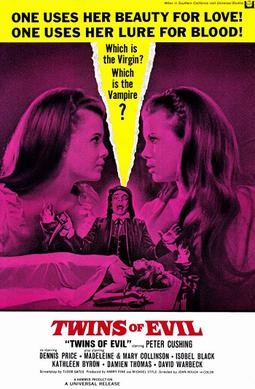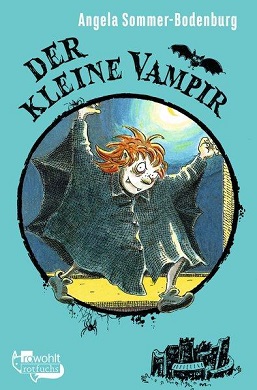Plot
One evening near the small Serbian village of Stetl early in the 19th century, schoolmaster Albert Müller witnesses his wife Anna taking a little girl, Jenny Schilt, into the castle of Count Mitterhaus, a reclusive nobleman rumoured to be a vampire responsible for the disappearances of other children. The rumours prove true, as Anna, who has become Mitterhaus' willing acolyte and mistress, gives Jenny to him to be drained of her blood. Men from the village, directed by Müller and including Jenny's father Mr. Schilt and the Bürgermeister, invade the castle and attack the Count. After the vampire kills several of them, Müller succeeds in driving a wooden stake through his heart. With his dying breath, Mitterhaus curses the villagers, vowing that their children will die to give him back his life. The angry villagers force Anna to run a gauntlet, but when her husband intervenes, she runs back into the castle where the briefly revived Count tells her to find his cousin Emil at "the Circus of Night". After laying his body in the crypt, she escapes through a tunnel as the villagers blow up the castle with gunpowder and set fire to it.
Fifteen years later, Stetl is being ravaged by a plague and blockaded by the authorities of neighbouring towns, with men ready to shoot any villager who tries to leave. The citizens fear that the pestilence may be due to the Count's curse, though the new physician Dr. Kersh dismisses vampires as just a myth. A travelling circus, calling itself the Circus of Night, then arrives at the village, directed by a dwarf and an alluring gypsy woman who are equivocal about how they got past the blockade; the villagers, appreciative of the distraction from their troubles, do not much question the matter. No-one in the village suspects that one of the circus artists, Emil, is Count Mitterhaus's cousin and a vampire, as are the twin acrobats Heinrich and Helga. Emil and the gypsy woman go to the ruins of the castle, where in the crypt they find the Count's staked body still preserved, and they restate his curse that all who killed him and all their children must die, although the Gypsy Woman asks "Must they all die?"
Whilst his son Anton distracts the armed men at the blockade, Dr. Kersh gets past them to appeal for help from the capital. At the Circus of Night, the villagers are amazed and delighted by the entertainment. Despite his wife's concerns over their wayward daughter, Rosa, and her attraction to the handsome Emil, the Bürgermeister takes her to the circus and, at the gypsy woman's invitation, visits its hall of mirrors where he sees, in one called "The Mirror of Life", a vision of a revived Count Mitterhaus, which causes him to collapse. Frightened by this event, Schilt tries to flee with his family from the blockaded village with the circus dwarf Michael as their guide, only to be abandoned by him in the forest and mauled to death by Emil, whose shapeshifting form is a black panther.
Müller's daughter Dora, whom he sent away earlier for her protection, has slipped past the blockade and is returning to the village to reunite with her father and her beloved Anton when she discovers the Schilts' dismembered bodies, arousing suspicions about the animals of the circus. That evening, Jon and Gustav Hauser, two village boys whose father helped instigate the killing of Mitterhaus, are invited by the gypsy woman to enter the hall of mirrors and are magically drawn by Heinrich and Helga to the Count's crypt, where they are killed and drained. After the boys' bodies are found near the castle, their grieving father and the sick Bürgermeister begin to shoot the circus animals. After an encounter with Emil, the Bürgermeister dies of heart failure, and his daughter leaves with the vampire. Trying to stop the Bürgermeister and Hauser, Albert Müller suddenly sees the face of the Gypsy Woman dissolve into that of his wife, but is unsure if what he saw was real. Meanwhile, Emil leads a Rosa to the crypt, where he kills and drains her, telling his cousin, Mitterhaus, to drink her blood, and that now the only child of his killers still to die is Dora, and that his twins will kill her tonight. The Gypsy Woman looks up sharply and calls out Emil's name, but he only repeats "Tonight!"
Dora and Anton are lured by the twins into the hall of mirrors where they try to whisk Dora through the Mirror of Life, but the cross she is wearing saves her. Later, the vampires enter the school house where Dora and Anton have taken refuge. Emil, in panther form, kills the boarding students, diverting Anton, while the gypsy woman (who is revealed to be Anna Müller and also the twins' mother, their father being Mitterhaus) tears the cross from Dora's neck, enabling Heinrich and Helga to attack her. Dora, however, escapes into the school chapel, where the twins are overwhelmed by a giant crucifix which she topples on them, destroying them. Nevertheless, with the help of the circus strongman, Emil and Anna succeed in having Dora and her guardian, Hauser's wife Gerta, kidnapped and taken to the crypt at Castle Mitterhaus, where they intend to use their blood – just like the blood from their previous child victims - as part of a ritual to restore the Count back to life.
Meanwhile, Dr. Kersch returns from the capital with an imperial escort and medicines for the plague. He also brings news of vampire killings in other villages, all of them visited by the Circus of Night. The men attack the circus and set fire to it, killing the strongman when he tries to stop them. As Hauser starts to burn down the hall of mirrors, he sees in the Mirror of Life a vision of Emil and Anna bleeding Gerta over the Count's body. This horrifying sight distracts him long enough to be burned fatally by the fire, but he lives long enough to alert Anton and the other men to Dora's plight.
Back in the castle crypt, the suddenly remorseful Anna (who is willing to kill anyone to resurrect her lover, but struggles with the idea of destroying her daughter) is killed when she attempts to save Dora from Emil. Anton, finding his way through the tunnel into the crypt despite a deadly ambush by Michael the dwarf, attempts to rescue Dora but is halted by Emil. Just then Müller, Dr. Kersh, and a soldier break into the crypt and battle Emil who kills or disables all his attackers, but Müller pierces him with the stake from the Count's chest just as he is dying from Emil's bite. Revived by the stake's removal, the Count rises from his sarcophagus and advances on Dora and Anton. Anton uses Müller's crossbow as a makeshift cross, repelling the Count long enough for him to jam the vampire's neck between the weapon's bow and stock and then pulling the trigger, decapitating him. As Dr. Kersh leads Dora and Anton from the tomb, he and the villagers set the ruins afire with torches, ending the curse, but Dora and Anton see a bat fly out of the tomb into the night and are left uncertain.
Critical reception
On Rotten Tomatoes the film holds an 80% approval rating based on reviews from 5 critics. [5]
Monthly Film Bulletin said "Robert Young – here making his first feature – manages to use the basic situation to establish a delicate fairy tale atmosphere, and he is greatly aided by some unusually restrained performances (from the women in particular). There is a sense of dreamy isolation as the "circus performers gradually take over the imaginative life of the community, isolated from the rest of the world by plague. And certain scenes early in the film (the aerialists changing back and forth into bats before the dumbly applauding villagers, the mirror maze in which victims catch a glimpse of their own deaths) achieve a genuine strangeness. The effect is, however, only fleetingly sustained; and as the plot finally succumbs to formula, the various cross-brandishing climaxes seem unfortunately limp in the context of the earlier part of the film. The struggle between John Moulder Brown and Robert Tayman has none of the elegant panache of the Cushing vs Lee confrontations, while the fashionably overt sexuality of the vampires (who tend to come out with hastily inserted explanations like "'one lust feeds another") proves a real encumbrance to the plot's more intriguing aspects." [6]
AllMovie called the film "one of the studio's more stylish and intelligent projects". [7]
PopMatters also called it "one of the company's last great classics", writing, "erotic, grotesque, chilling, bloody, suspenseful and loaded with doom and gloom atmosphere, this is the kind of experiment in terror that reinvigorates your love of the scary movie artform". [8]
New York Times film reviewer Howard Thompson dismissed it outright without even the courtesy of a proper review, in favour of its Hammer stablemate Countess Dracula with which it shared a double bill. His curt review measured two sentences: "Wise horror fans will skip 'Vampire Circus' and settle for 'Countess Dracula' on the new double bill at the Forum. Both are Hammer Productions, England's scream factory, but the first was dealt a quick, careless anvil." before continuing with semi-praise for Countess Dracula. [9]
The Los Angeles Times was fairly positive, calling the film "a true chiller" with "lots of real-looking teeth, believable gore, and – save for a very lurid ending (not for the kiddies) – a lot of pace, a certain sense of subtlety and a definite, consistent style." [10]


